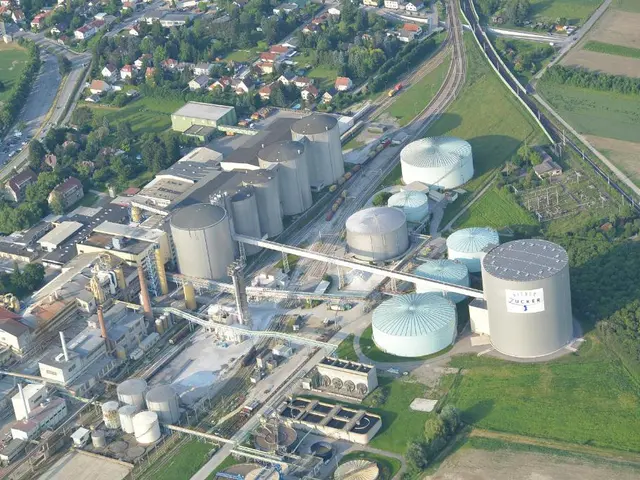The persistent drop in oil prices comes at a time when analysts are concerned about the global increase in production and the rejection of supply limits by OPEC. With the worries about the impending decline in crude oil demand, particularly in China, gasoline prices in the U.S. have fallen to an average of approximately $3.19 per gallon - a decrease of 22 cents from last month and 14 cents compared to a year ago.
To better comprehend the dynamic driving down the oil prices, Jim Mitchell, an oil analyst from the London Stock Exchange Group's Market Report for the American market, and Corey Stewart, an oil analyst for the European market, were interviewed.
First, we need to understand that oil prices have been trending downwards for seven consecutive weeks. This is neither a green light nor a red flag for investors, but one thing is certain: higher oil prices are not in the cards for now. The oil market, after all, is the largest commodity market worldwide, as stated by Mitchell.
Oil acts as a form of currency, with many nations financing their entire economy with it. Over the past few months, we had a temporary bottleneck in oil supply due to which prices soared. With the end of the traditional driving season, we can expect a surge in oil transportation and a corresponding decrease in price. The drop towards the end of the year is not unexpected as the oil market might shift from an undersupply to a mild oversupply.
Focusing on the oil supply side, Mitchell points out that with oil prices surpassing the $90 per barrel threshold, other countries – including the US – found it lucrative to increase their energy production. This has made it more challenging for OPEC to implement various strategies used to restrict supply and push prices up. There's also an issue of non-compliance from key OPEC+ members, particularly Libya, which continues to produce more than the agreed-upon quota. Iran is producing a total of 3.2 million barrels, with plans to reach 3.6 million barrels by the first quartile of the next year. This is while Saudi Arabia still maintains production cuts.
Discussing geopolitical events and the shifting center of oil production, Mitchell claims that this might signal a larger power shift in the oil market. However, he goes on to emphasize that every day is critical, and the public's awareness of these events varies.
As for the winter concerns, Mitchell doubts that we'll face any major issues. Even in the event of colder weather in Europe, the situation is unlikely to replicate last year's crisis. Stewart adds that diesel reserves in Europe are currently well above the low point, and the production in the US is better regulated than before, enabling companies to handle storms more effectively and work towards financial stability. The influence of OPEC in the western world is also less prominent compared to the past.
Regarding the weak demand for crude oil in China, Mitchell explains that due to the scarcity of information in the past two years, it was challenging to obtain data on Chinese oil demand. However, several interesting points stand out. China's refinery capacity is growing significantly, currently at 15.5 million barrels per day, and soon expected to surpass the US's capacity of 17.7 million barrels per day. The Chinese government has also imposed quotas to control the production of the Chinese refinery industry, ensuring that it doesn't become a laughing stock.
However, these quotas prey on the Raffineriindustrie in Südostasien, as they restrict its growth. This, in turn, impacts the US market as well. As for the dumping of Chinese products in the Pacific market, it's often assumed that the demand must decrease there. However, this isn't necessarily true, making China's energy situation more complex.
Stewart concludes by discussing the recent drop in oil imports in the last month, which saw a decrease of 10% compared to the previous month and 9.3% compared to the previous year. Despite the appearance of a decline in the Chinese oil demand, it's an area of ongoing uncertainty.
In conclusion, the persistent drop in oil prices is a complex situation driven by factors such as geopolitical tensions, shifts in power in the oil market, the growth of refinery capacity in China, and the renewed focus on energy production in countries like the US. While the current market conditions present challenges, they also present investment opportunities, especially in terms of diversification and hedging strategies.
Enrichment Data: - Market Volatility: The decline in oil prices has contributed to increased market volatility. Investors are grappling with uncertainty surrounding geopolitical tensions, trade wars, and economic growth, which are all affecting the oil market.[2][3] - Investment Strategies: Investors are employing various strategies to mitigate the impact of these uncertainties. This includes diversification into a portfolio of energy assets, hedging using derivatives like options and futures, monitoring geopolitical risks, and investing in stable regions with lower geopolitical risks.[2] - Geopolitical Tensions: The ongoing U.S.-China trade war and geopolitical tensions, particularly in the Middle East and Russia-Ukraine conflict, are significant contributors to the decline in oil prices. These tensions raise concerns about potential supply disruptions and impact global economic growth.[2][3] - Economic Impact: The decline in oil prices is also influenced by economic factors. The US Federal Reserve's cautious approach to interest rate cuts and the potential slowdown in economic activity in the world's largest oil-consuming nation are contributing to the downward movement in oil prices.[3] - Supply and Demand Dynamics: The EIA forecasts that Brent crude oil prices will fall due to growing production in countries outside OPEC+ and slower demand growth. This is expected to increase global oil inventories, placing downward pressure on prices through 2026.[1][4] - Investment Opportunities: Despite the decline, some analysts remain optimistic about the long-term prospects for oil prices. The current decline is seen as a correction after a period of strong gains, and fundamentals remain supportive of higher prices. This presents an opportunity for investors to capitalize on the current market conditions by employing strategies like diversification and hedging.[2]








